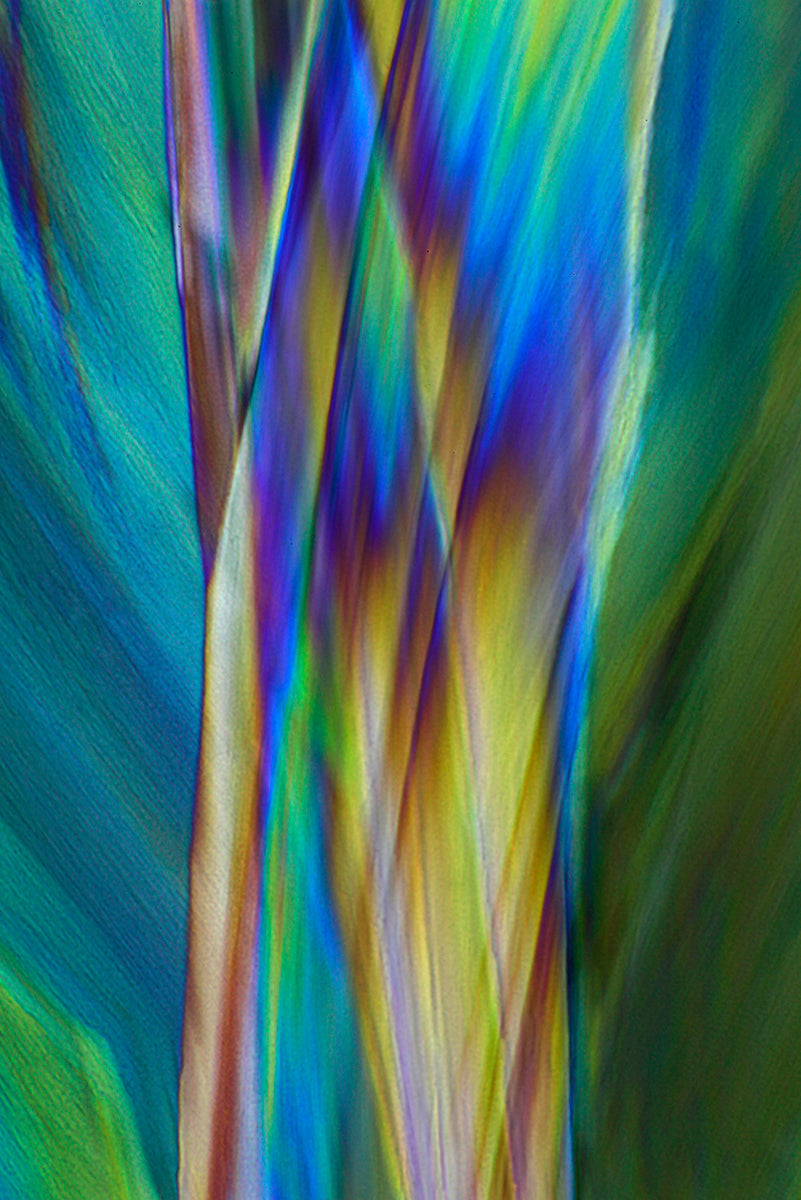
JUBILATION -Photograph of crystalline DMAE (an amino acid)
NOTES FROM THE STUDIO/LAB:
DMAE is my new crystalline subject and a real beauty! Also known as dimethylaminoethanol, it is a trace amino acid and a building block to the formation of acetylcholine, which is an important neurotransmitter in the brain. Believed to elevate mood, enhance memory, and improve brain function, DMAE can also be found in abundance in sardines, anchovies, salmon, and now my crystal portfolio.

ENLIGHTENMENT -Crystalline DMAE (an amino acid)
ART AND SCIENCE- The Right Place and The Right Time
On a brightly lit summer morning in the year 1838 a gentleman stopped along the Boulevard du Temple in Paris to have his shoes shined. Unbeknownst to him he was about to become the first person ever photographed. The photographer was Louis Daguerre and his process for capturing images with a camera would turn the art world on its collective head.

The person in the photograph (he's in the lower left corner) was most likely not the only person on the street that morning. The Boulevard du Temple would have been busy with people going about their morning business. He was however, the only person who stayed still long enough to be recorded during the eight (yes, eight) minute exposure. All the other individuals passed in and out of the frame (and history) without pausing long enough to be recorded.
Cameras had been in existence for hundreds of years prior to Daguerre's time. They were used by artists as an aid in capturing likenesses and perspective, but until Daguerre and his chemistry, there was no way to fix an image in the camera and make it a permanent record of the scene. "Daguerrotypes" as they were to become called were hugely popular and made Daguerre a national hero and very wealthy man.
Photography soon found its place alongside the other arts and has continued to evolve to this day. Without these technological advances in photography my crystal photography would not be possible. The instability of my crystalline subjects allows me only a very narrow window of time to find, compose and capture the image under the microscope as the fragile crystals sometimes last only seconds.
Nature and the unique circumstances of time and place have allowed me a glimpse of something special, a nexus of events in a beautiful crystalline microcosm. Successfully capturing the moment like Daguerre's photograph that summer morning, is often about being in the right place at the right time.





